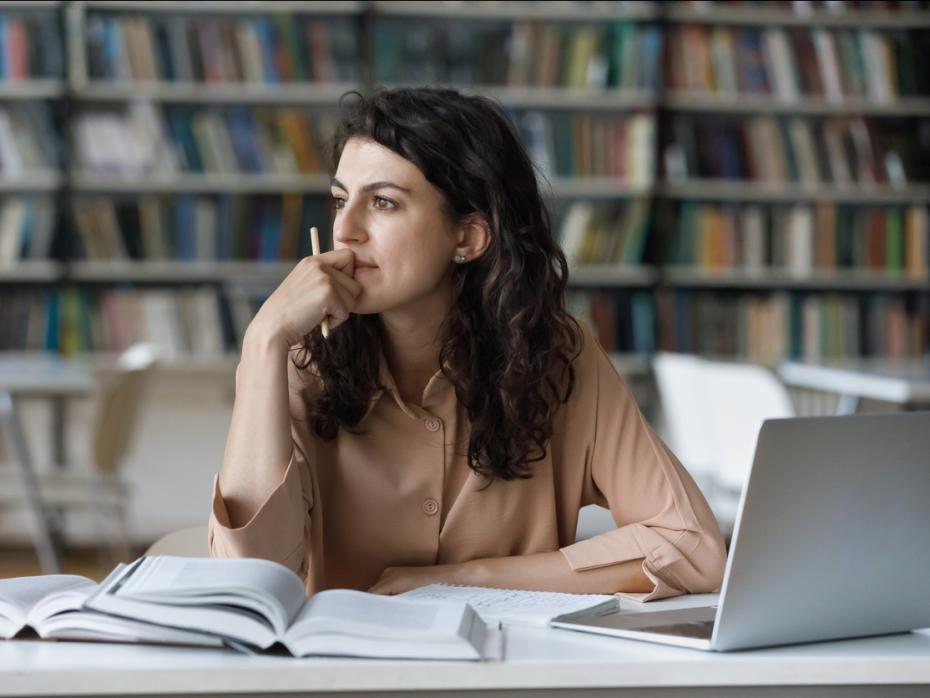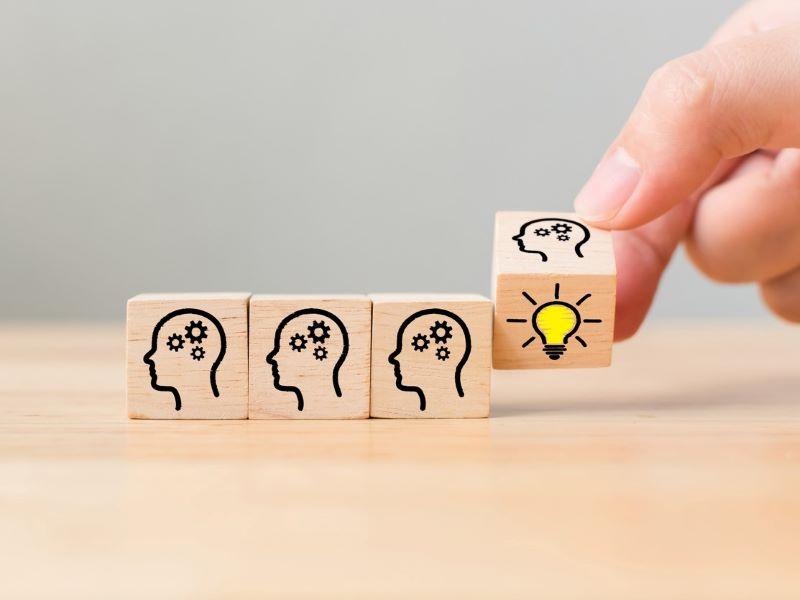
What is metacognition? Get students thinking about their thinking
If you have ever uttered or heard the phrase “You’re thinking about this all wrong!” you are already familiar with metacognition.
Metacognition has a fancy Greek prefix but, in essence, it’s thinking about how you think. It is often seen as an effective and powerful tool for student learning, but what is it, how is it facilitated and developed, and what are strategies for enhancing student metacognition?
What is metacognition?
Metacognition is thinking about thinking. More specifically it’s making judgements about the questions you are asking or the assumptions you are making while doing something. To engage in metacognition is to take a reflective stance on how you think generally in relation to a specific set of issues or problems or to reflect on how you approach solving a specific problem or task.
Metacognition is generally thought of as a combination of reflection on mental activity or action and a response. It is a part of self-regulated behaviour. Including metacognition in university courses offers students strategies and approaches to evaluate and improve their thinking.
My metacognitive story and the benefits of metacognition in education
At university, I had a lightbulb moment after being frustrated that all my studying did not lead to much learning. Thinking about study and memory, I realised that I had to not only take in ideas and information but pretend to explain them to someone else to better articulate them to myself and then later in different contexts, including exams. I was making thinking articulate or “visible” for myself so it was more complete and in a form someone else could also understand. When I talk to university staff about learning at university, generally most of them have a story about how they learned. The takeaway is that smart people aren’t just smart by nature; they make themselves smart (or smarter) by thinking about thinking.
The goal of using metacognition with students is to empower them to think, act and communicate more like a disciplinary expert so that students can grow into “experts” who ask appropriate questions in context. Moreover, good thinking skills and developing a critical stance towards your thinking, including testing different approaches, is a lateral and life skill that will help students in whatever future they encounter.

There is a gnomic quote attributed to both Confucius and Yoda: “When the student is ready, the teacher appears.” In the context of metacognition, this is exactly backwards: when the student is ready, the teacher disappears. Metacognition is learning how to learn and how you learn, so that the student can become the master. Both my story and other benefits are included here to highlight the importance of motivating students to engage in metacognition because it may be unfamiliar and uncomfortable for them.
How to develop effective metacognition strategies
Strategies for enhancing metacognition in the classroom involve student reflection on how well they function in light of specific tasks – in short, how efficacious students think they are at using disciplinary thinking to achieve. If this is iterative, self-regulation of behaviour can be scaffolded.
Before getting students started, it is best to explain what metacognition is and to get students to notice when they think about their thinking already. This can be as simple as asking them to make a choice. In the introduction to a critical thinking course I taught in China, I shared a news story about a Nepalese airline sacrificing two goats following technical problems with a Boeing 757 and asked students if they would get on the plane, followed by how they would get home if they could not fly. I then asked them why they made that choice. They started creating and filling a mental toolbox.
Students should have a metacognitive mental toolbox because different concepts and ways of thinking do different things. We use analogies to ask students to think of ideas like pieces on a chess board that move differently or gadgets in a kitchen that help prepare food differently; they all serve the same goal but do different things to achieve it. You should have a range of analogies yourself to explain the purpose of the range of metacognitive strategies. Talking out your thinking with students also helps because this provides a model of cognition for them to follow. The teaching of analytic subjects such as mathematics involves writing out formulas on the board to model and explain reasoning, commonly including errors that show how disciplinary experts think about their thinking.
- Resource collection: How to encourage student self reflection
- Using films to encourage reflection and critical thinking in your teaching
- How to develop cognitive presence in your learning community
Teaching about a growth mindset and being resilient is also important because novices generally employ metacognition to reflect on mistakes and difficulties to develop different approaches to thinking. Some students think that once a task is completed it is over, which is not the case if there is a reflective step, and others want distance from failures because of negative emotions. Those more experienced with metacognition actively seek to reflect on both successes and failures to learn more from experience, to turn experience into concepts and then test those concepts in action.
What are metacognition strategies in higher education?
Metacognitive strategies to have students use include:
- Articulating decision-making, such as problem and solutions
- Drawing concepts and mind mapping, especially over time, because this will show them how their thinking is developing
- Foreseeing questions and counter positions to their positions
- Brainstorming followed by idea selection or ranking, which works best in groups because they will have to justify choices to one another
- Self-comparison of their work to models (this is also a way to get them to better judge AI-generated content to enhance AI literacy if there is an issue with students accepting low-quality AI-generated content as authoritative)
- Post-task reflection on success and lack thereof, generally asking how and why students got the results they did, and then a note about what to change next time
- Student creation of revision materials for others is also a positive way to get them to think about what would most help a learner in their current context.
A more advanced idea is to create a “talk show” escape room where students have to solve problems to escape a literal or metaphorical locked room, and then interview one another about how the escape went, how efficient it was, and what they might do differently next time. I like this because it’s more fun and performative as well as social and reflective, and it can be assessed in real time, but there is the additional element of preparing students to role-play in a talk show.
A general formula for running lessons with metacognitive elements is to have students engage in a task, reflect on their thinking and how it impacted performance, look for alternate ways of thinking, and then test new ideas in action.
Metacognition is a great thinking skill and habit of mind and behaviour. Get your students to think about their thinking and then teach one another, and you, something about thinking and problem-solving.
Charlie Reis is an educational developer at Xi’an Jiaotong-Liverpool University.
If you would like advice and insight from academics and university staff delivered direct to your inbox each week, sign up for the Campus newsletter.
Additional Links
For more advice and insight on this topic, see our spotlight guide on critical thinking in teaching and research.




